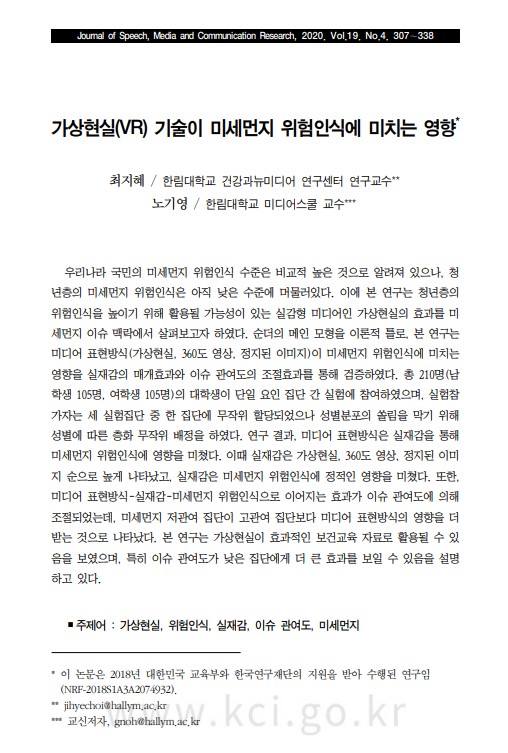가상현실(VR) 기술이 미세먼지 위험인식에 미치는 영향
페이지 정보
- 최고관리자
- 23-05-31
- 2,780 views
- 2020
본문

Recently, virtual reality (VR) has been emerged as a promising tool to educate youth about risks involved in public health issues, With the issue of particulate matter (PM) air pollution in South Korea, this study aimed to explain how VR influences youth’s risk perception. Based on Sunder's MAIN model as a theoretical framework, this study examined the effect of media modality (VR, 360-degree video, and still image) on PM risk perception. With the purpose of exploring the mechanism underlying it, the mediating role of perceived realism and the moderating role of issue involvement were also tested. A between-subjects experiment was conducted on a sample of 210 college students (105 males and 105 females). Each participant was randomly assigned to one of three experimental conditions. Results indicated that media modality had an effect on PM risk perception through a mediating mechanism of perceived realism. Specifically, perceived realism was high in the order of VR, 360-degree video, and still image, and higher levels of perceived realism led to higher PM risk perception. In addition, results also supported a moderated mediation model in which the effect of media modality on PM risk perception through perceived realism was moderated by issue involvement. Thus, VR can be used as an effective health education material, particularly for the digital generation, and the effectiveness can be increased when youth’s issue involvement is low. Limitations and implications are also discussed.
Citation
최지혜, 노기영. (2020). 가상현실 (VR) 기술이 미세먼지 위험인식에 미치는 영향. 한국소통학보, 19(4), 307-338.